Signs of Mice in Your House or Apartment
By:
Updated:
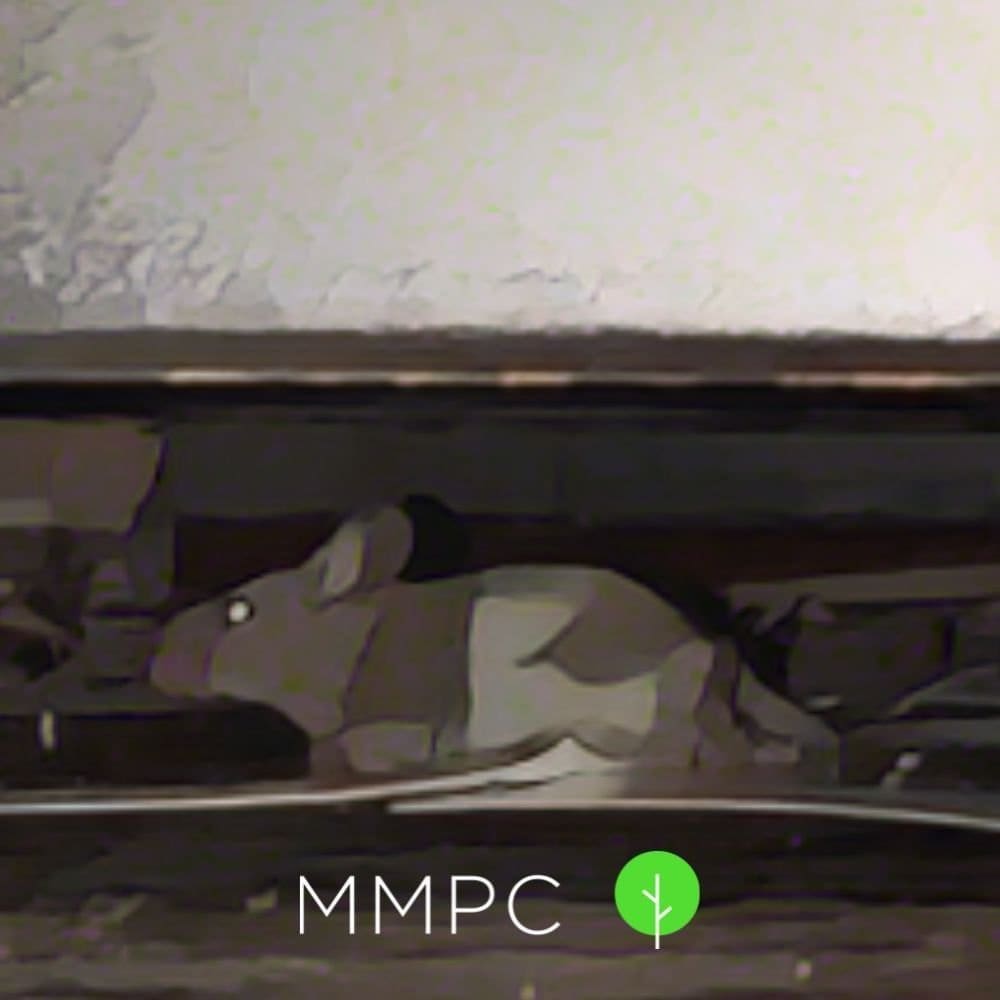

Noticing signs of mice in your home is an important step toward getting rid of them. Left unchecked, house mice can contaminate food and cause damage to walls, electrical wiring, and personal belongings.
Common Signs of Mice
When temperatures start to cool down, mice and other pests living outside seek warmer places to nest for the winter. If you live in an urban area like New York City, your house or apartment might be an appealing option for these rodents.
Finding evidence of their presence early can help prevent the problem from worsening. If you suspect mouse activity in your home, here are 8 signs of mice to look out for:
1. Droppings
One of the most obvious signs of mice is finding droppings. Mouse droppings are small (about 1/8 to 1/4 inch long) and grain-shaped. Fresh feces are often dark brown or black, but they may lighten in color over time as they dry out.
When assessing clients’ homes for mouse issues, we often find droppings near areas where food is stored or accessible. This includes underneath appliances, kitchen cabinets, pantries, and along baseboards. The amount of droppings indicates how severe the infestation is.
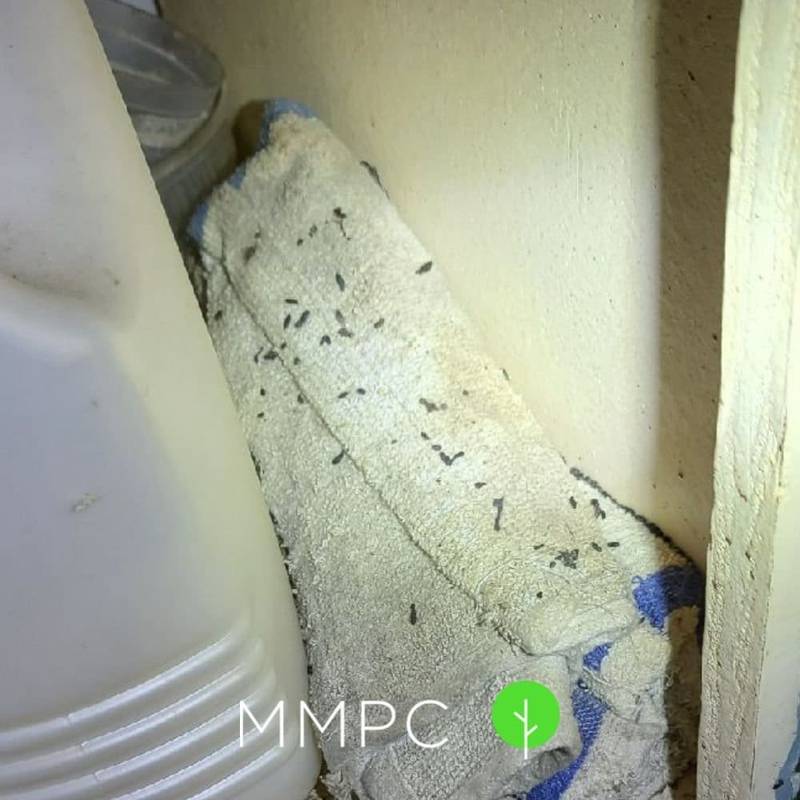
2. Holes
Mice gnaw holes to create entry points or pathways. With their small, flexible bodies, they can fit through openings as small as a dime.1
Check for gaps or cracks under and behind kitchen cabinets, inside closets, around doors and floor vents, and where the floor and wall meet. Mouse holes might also appear as damaged sections of walls or paneling, a small gap or hollowed crack in the foundation, or space created by crumbling mortar.
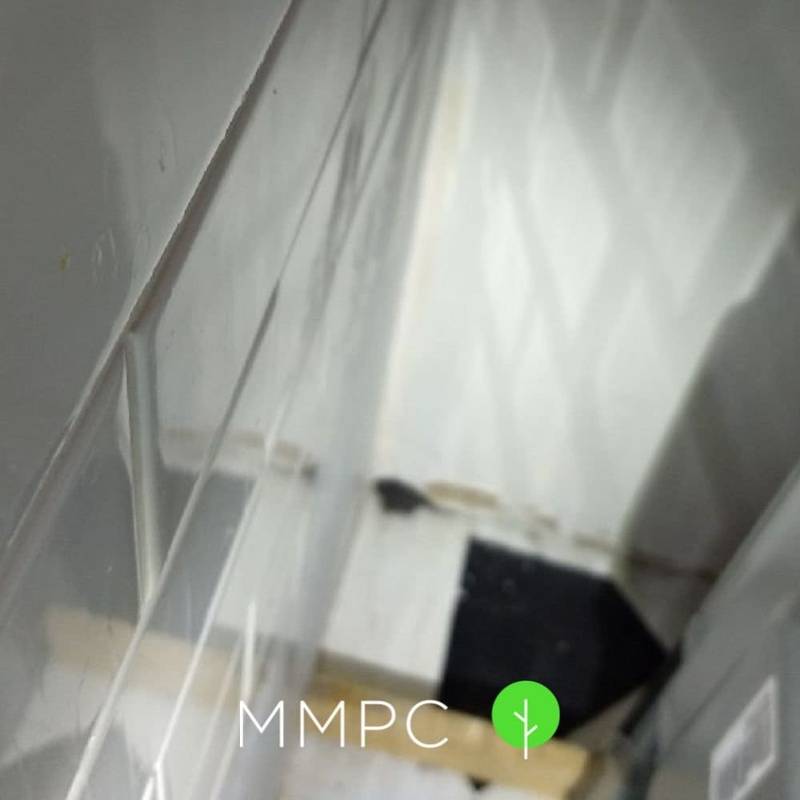
3. Rub Marks
Rub marks are another common sign of mice activity. Mice tend to travel along walls or edges where their bodies rub against surfaces, leaving behind greasy smudges or dark marks.
When inspecting your home, use a flashlight to look for dark smudges or discoloration along walls and sidings. Check along floors, baseboards, beams, near pipes, and other hidden areas where mice are active. Finding rub marks often means the mice have established paths in your home.
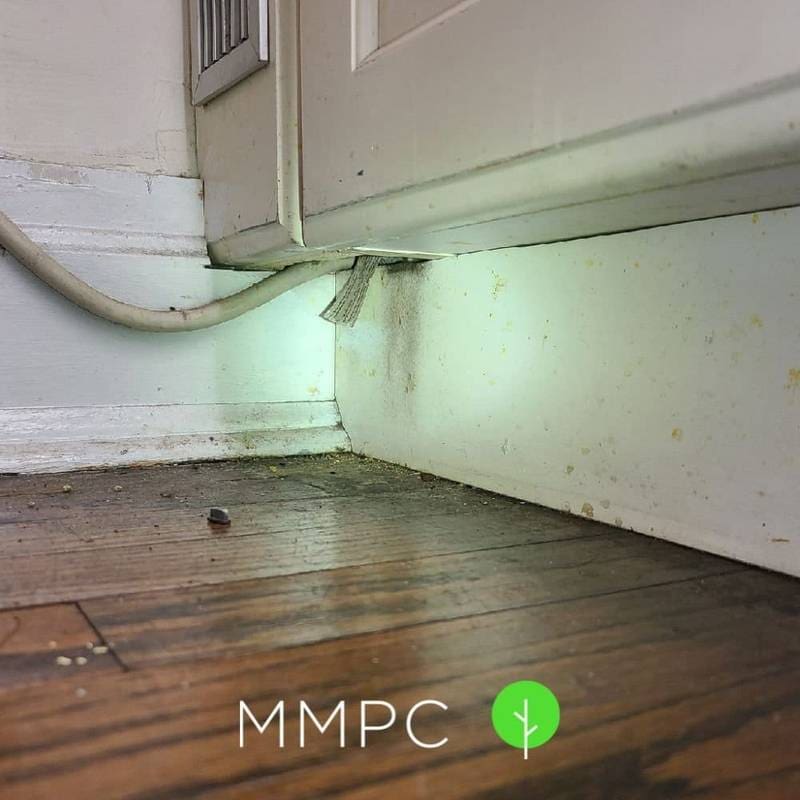
4. Gnaw Marks
Mice have a constant need to gnaw on hard surfaces to control the growth of their teeth. They frequently chew on materials like wood, plastic, drywall, cables, and electrical wiring.
Check for grooves and markings along baseboards and around cracks or holes in your walls. Individual gnaw marks are small and clean-cut, consisting of two parallel grooves that are 1–2 mm apart.
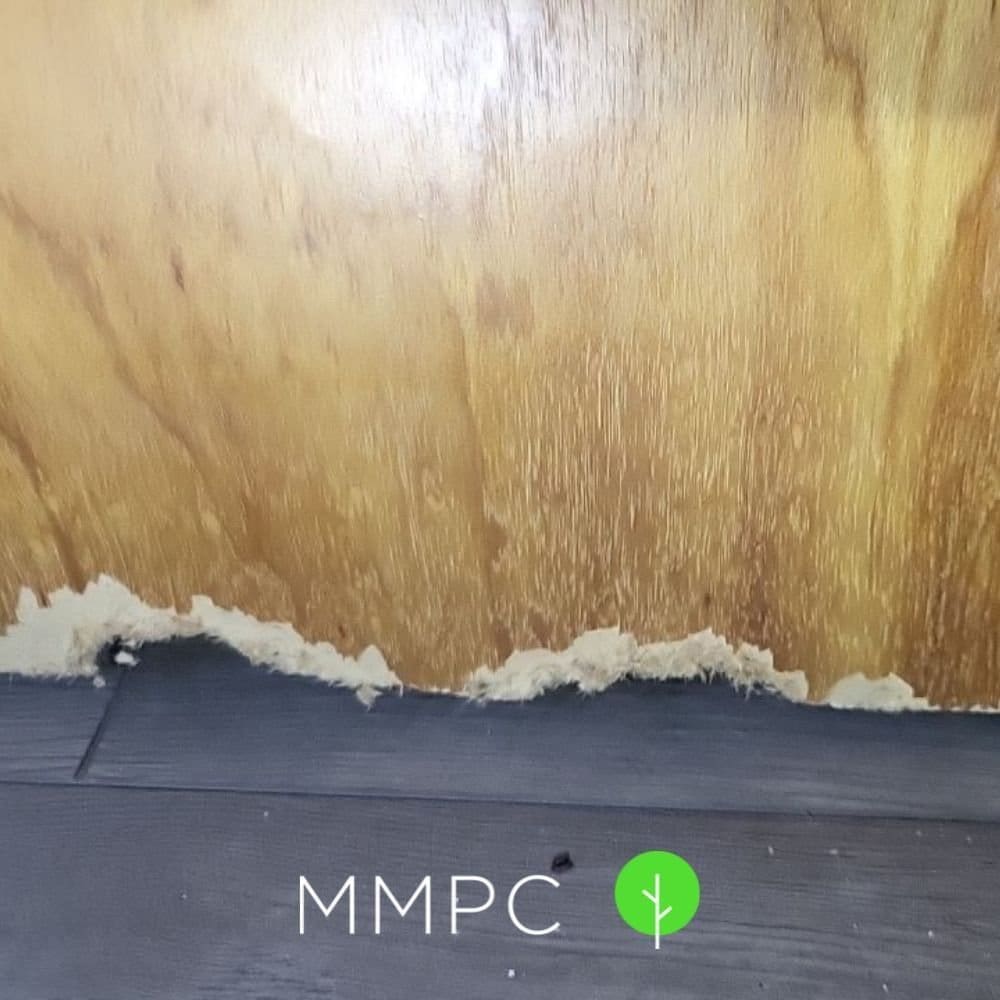
5. Nests
Mice create nests from soft materials like paper, insulation, and fabric. These nests are often hidden in dark, undisturbed areas such as behind walls, in cabinets, or underneath large appliances. This makes them difficult to find—you’re unlikely to stumble upon one by chance—but if you do, it’s a pretty clear sign to call an exterminator.
In addition to hiding and breeding, mice may also store food near their nesting sites. These food caches are usually located within 10 feet of the nest and may attract other pests, like cockroaches, beetles, flies, and mites.
6. Noises
Scratching, scurrying, or squeaking noises at night are another sign of mice. Since mice are nocturnal, they are most active after dark and can be heard moving through walls, ceilings, or under floors. Their penchant for gnawing can produce grating sounds as they scratch and chew on walls, floors, or insulation. Squeaking is another common sound associated with mice, but it’s important to note that consistent or predictable squeaks might indicate a mechanical or structural issue rather than a rodent infestation.
7. Odors
Another sign that mice have invaded your home is a pungent, musky smell. The odor comes from the ammonia in mouse urine, which mice use to mark their territory.2 You may notice the smell more strongly near areas where mice travel or nest, like baseboards, cabinets, or pantries.
Foul, rotting odors can also come from dead mice that have succumbed to traps, poison, or natural causes. If you notice this type of odor, it’s important to locate and carefully dispose of the deceased mouse, as this can be a health hazard.
8. Unusual Pet Behaviors
If you have pets, they might alert you to signs of mice by reacting to sounds or smells that you may not notice. Cats or dogs may show interest in particular areas, scratching or sniffing around walls or cupboards.
Where to Find Signs of Mice
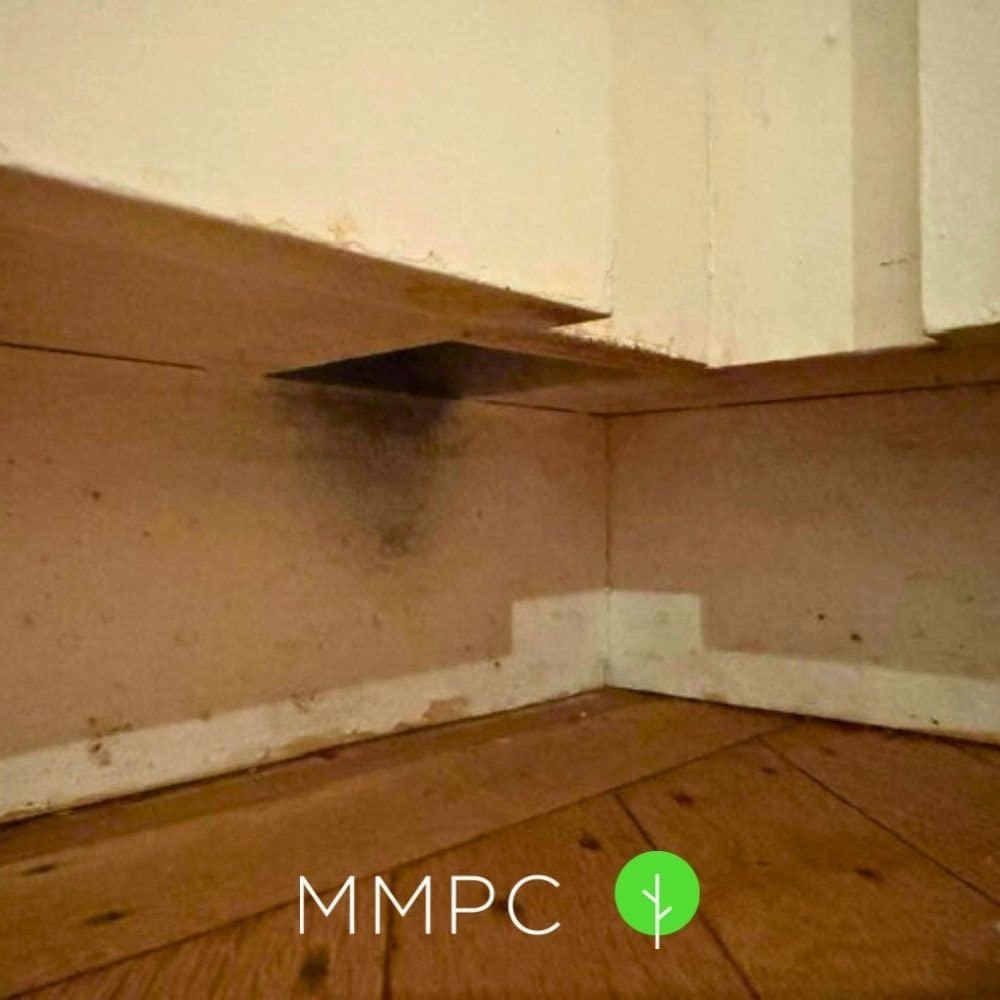
Mouse Entry Points
Mice can squeeze through gaps as small as a quarter of an inch, making it easy to enter your home unnoticed. Here are some common entry points that we recommend sealing:
- Walls: Look for small holes or gaps along baseboards and between cabinets.
- Utility lines: Gaps around plumbing and utility lines are common entry points for mice. These are often hidden under sink cabinets and behind large appliances.
- Doors and windows: Check for gaps around doors and windows, as well as damaged weatherstripping.
- Roofs: Mice are excellent climbers and enter through gutters, vents, and chimneys.
Finding and sealing entry points can prevent more mice from entering your home and stop an infestation from getting worse.

Common Hiding Spots
Once inside, mice look for warm, secure places to hide and nest. Here are a few places to check for signs of mice in your home:
- Crawlspaces and wall voids: These provide mice with a secure environment, along with insulation and debris that they use as nesting material.
- Kitchen appliances: Mice often hide behind stoves, refrigerators, and dishwashers.
- Pantry shelves: Check for food debris or droppings that indicate mouse activity.
- Storage areas and closets: Cluttered, dark spaces are prime hiding spots for mice.
- Attics: Mice use insulation for nesting, making attics a common hiding place.
Conclusion
Spotting the signs of mice early can help prevent an infestation from worsening. Regular inspections and vigilance around potential entry points and hiding spots can help you catch mouse activity before it becomes a bigger problem. If you think you may have mice, contact a pest control service to help eliminate the issue.
Need help with a mice in New York City or the Tri-State area? Talk to our experts today about mouse extermination and exclusion services.

About the Author
References
- Bennett, P. (2022). Mouse Mythbusters: Can a Mouse Squeeze Through a Hole the Size of a Dime? Pest Control Technology. https://www.pctonline.com/article/mouse-mythbusters-can-a-mouse-squeeze-through-a-hole-the-size-of-a-dime/ ↩︎
- Arakawa, H., Blanchard, D. C., Arakawa, K., Dunlap, C., & Blanchard, R. J. (2008). Scent marking behavior as an odorant communication in mice. Neuroscience & Biobehavioral Reviews, 32(7), 1236–1248. https://doi.org/10.1016/j.neubiorev.2008.05.012 ↩︎


